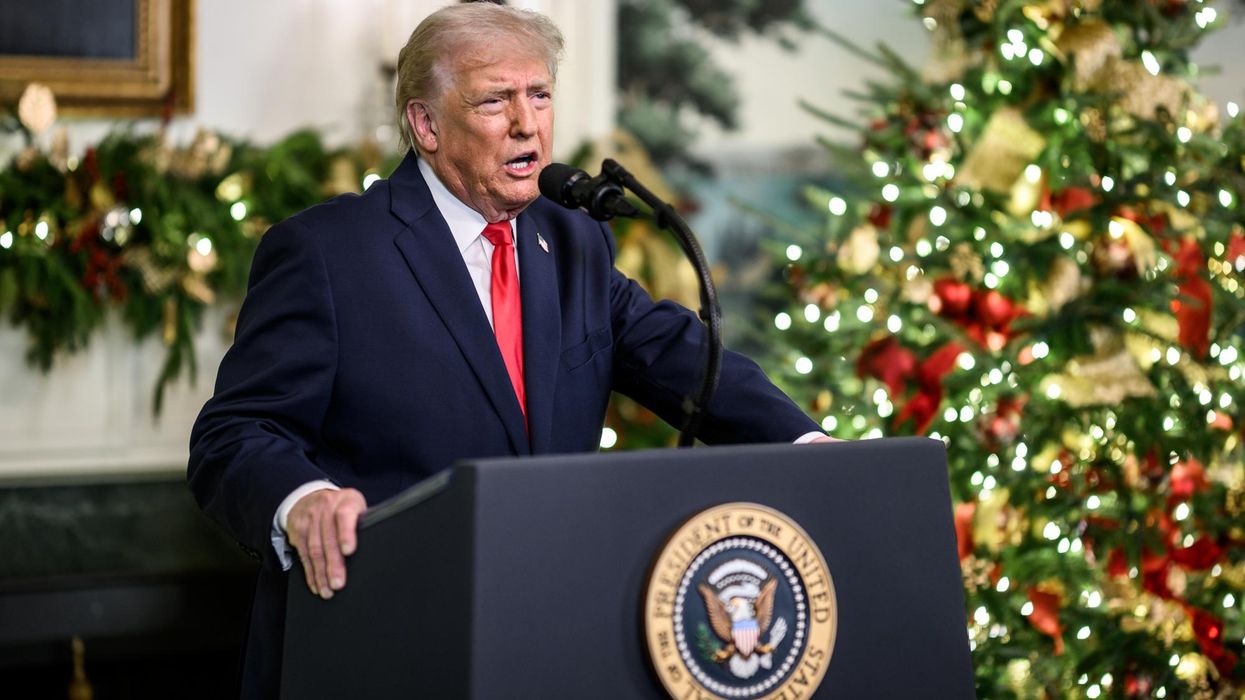This is the fifth installment in a multi-part Responsible Statecraft series on the Strategic Competition Act (S.1169), a bill under consideration that would effectively constitute a declaration of a cold war on China by the U.S. Congress. The introduction to this series critiquing the overall approach of the bill can be read here.
The omnibus anti-China bill known as the Strategic Competition Act, now moving rapidly through the Senate with little public debate, characterizes China’s Belt and Road Initiative as Beijing’s plan to secure worldwide “political deference through economic dependence.” The unifying slogan in Xi Jinping’s economic statecraft, BRI is depicted by the Chinese government as its signal contribution to global development, bringing capital and infrastructure to the countries of the Global South while dramatically expanding the global public good of stronger connectivity for commerce, finance, and culture. The proposed SCA text rejects those claims and portrays the BRI as a crucial part of China’s multidimensional assault on the national interests and values of the United States and on “the future peace, prosperity, and freedom of the international community.”
To fight back, the SCA would authorize three separate appropriations totaling $570 million per year to support media coverage aimed at discrediting China’s foreign initiatives. It would order President Biden to work with allies at the United Nations to prevent U.N. recognition of the BRI as a global good. And it includes provisions aimed at forcing developing countries to choose either the “malign influence” and “predatory economic practices” of China or the “democracy, rule of law, and market-driven economic growth” offered by the United States.
This bill reveals within Congress a disastrously crude, one-sided, and zero-sum view of Chinese motivations and intentions. Regarding China as a monolith plotting to take control of the world and put an end to the freedoms of the liberal international order means that success for U.S. foreign policy requires failure for the Chinese government and the people of China. In this framework, the possibility of negotiation or mutual gain is excluded because the safety of the United States and the rest of the world requires the containment and subordination of China.
Enshrining such a view in policy, the SCA would accelerate the move to open conflict between the two countries. In the process, it would also shatter the possibility for a very different global future. The alternative — U.S.–China cooperation for global development — would not only help overcome desperate poverty in the Global South but also permit a just global climate transition for all people. It would also create widespread new opportunities for business and workers in both China and the United States, ending the zero-sum struggle for growth currently forcing the two countries into conflict.
The BRI is many things — not all of them good — but the now extensive research from Western scholars presents a far different picture from what currently circulates as conventional wisdom in Washington. Rather than top-down centralized control, this research shows a high degree of fragmentation even within the central government, with different ministries pushing different and often contradictory agendas. The landscape is further complicated by other domestic interests — ranging from provincial and local governments to state-owned enterprises of varying size to private entrepreneurs — all clamoring for influence and manipulating the idea of BRI for their own ends. Contending interests in host countries also strongly shape the BRI, sometimes making a mess of the hopes that Chinese investors and lenders bring to these projects.
Far from a coherent plan, the BRI is better understood as an open-ended rubric under which many competing interests pulling in different directions can be accommodated. As a result, the projects placed under the BRI run the gamut from diplomatically important proposals with significant central government oversight to small-scale, purely commercial investments opportunistically attached to the program. Most often, BRI aims to secure markets for Chinese companies, stable supplies of inputs for Chinese factories, and productive outlets for China’s large foreign exchange holdings. In this sense, the SCA’s charge of “mercantilism” is well-grounded. Yet promoting domestic industries hardly distinguishes China from the United States. For example, the confirmation hearing for Katherine Tai, Biden’s new U.S. Trade Representative, featured a parade of senators engaged in special pleading for industries ranging from apples and lumber to aircraft and software.
U.S. policymakers often claim that the BRI engages in “debt-trap diplomacy,” in which China entices corrupt leaders of developing countries to take on unsustainable levels of debt and then seizes strategic assets. Western scholars have repeatedly debunked this idea, again showing a far more complex set of dynamics in which economic rather than security aims are primary. Far from systematically assembling a stranglehold over the world’s most strategically important infrastructure, Chinese actors more often find themselves saddled with unwanted low-quality assets.
Chinese practices on cancelling or rescheduling loans differ somewhat from those of the West’s Paris Club lenders cartel, but not in ways that would set them apart as “predatory.” The terms of Chinese lending may be less concessionary than Western development banks, but these loans are also available to a wider risk profile. At times, borrowers have even found Chinese lending practices less onerous than those of Western institutions. Unlike the footloose capital of private banks, quickly fleeing at the first sign of trouble and leaving devastation in its wake, or the International Monetary Fund’s imposition of damaging austerity as the price of a bailout, credit from Chinese state institutions often proves to be “patient capital,” providing space to troubled lenders with its longer time horizons and priority on maintaining good state-to-state relations.
Yet the same permissiveness that has sometimes proved a boon to developing countries has in other contexts produced serious negative consequences. Chinese lenders and investors generally defer to host-country regulations on issues like labor rights and environmental protection. When host country governments or social movements demand such standards, Chinese capital plays by their rules; when they do not, Chinese capital shows no compunction against exploitation and ecological destruction. Likewise, if desired by the host country, Chinese companies are happy to build fossil fuel infrastructure that feeds the climate crisis. Though efforts are underway to green the BRI, progress so far has been halting and uneven. In placing profit over human well-being, however, Chinese capitalists are not alien to the West but following the well-trod path of multinational corporate expansion.
The BRI, then, is complex and fragmentary in a way that DC discussions usually miss. China is not a comic-book villain but a fractured and unequal society whose competing social groups are all searching for opportunity and status in a highly competitive global system — much like the United States. Stagnant growth in the global economy since 2008 has increasingly turned this search for opportunity into an existential struggle. U.S. policymakers are thus not wrong to perceive a threat from their Chinese counterparts, but the threat is quite a bit more prosaic than the common portrayal of sinister foreigners scheming against American jobs and freedom. The SCA would dangerously intensify zero-sum tensions rather than addressing the structural sources of those tensions.
Instead of demonizing the BRI, U.S. leaders should recognize the reasons it has found such an enthusiastic reception around the world. The billions living in the Global South have been starved of capital for decades as the inequalities of free market globalization concentrated investment in the richest countries. The deprivation and suffering tolerated within the liberal international order are not only unconscionable but also destabilizing — by limiting the possibilities for growth in the global economy, they have sharply constrained the space for Americans and Chinese alike to succeed.
The SCA instrumentalizes the cause of development to the needs of great power conflict, threatening a return to the blood-drenched Third World conflicts of the Cold War. If the United States instead applied reformist pressure on a foundation of cooperative engagement with the BRI while dramatically increasing its own contributions to the project of global development, a far more hopeful and prosperous future would be possible for all.
Read the first four installments of the series:
The ‘Strategic Competition Act’ is a dangerous declaration of cold war on China
Stability in the Taiwan Strait at risk under ‘Strategic Competition Act’
How the ‘Strategic Competition Act’ could actually stonewall talks with North Korea
‘Strategic Competition Act’ takes aim at collaborative exchanges with China
















